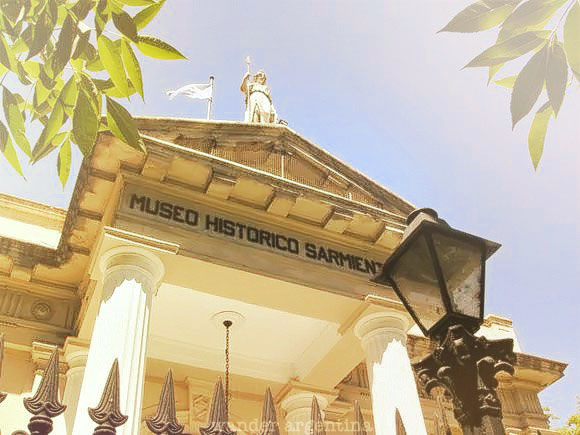Belgrano, located just north of the lush, expansive neighborhood of the Palermo neighborhood, forms the rest of the pulmonary system of central Buenos Aires, with vibrant green spaces and shady streets.
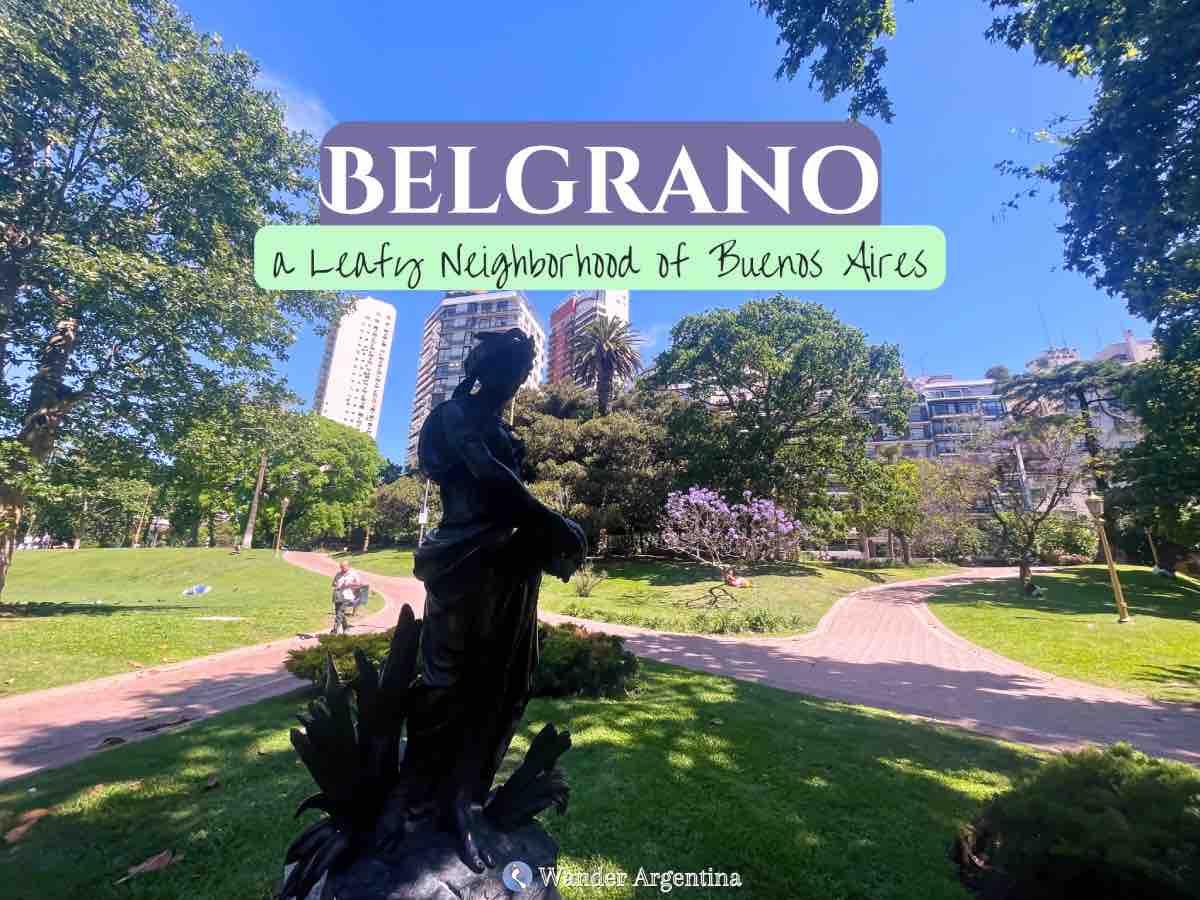
This substantial barrio contains a nice mix of bustling commercial streets and quiet tree-lined residential avenues.
Named for Argentine forefather and creator of the Argentine flag, Manuel Belgrano, this neighborhood has a refreshing mix of city life within a family-oriented urban community.
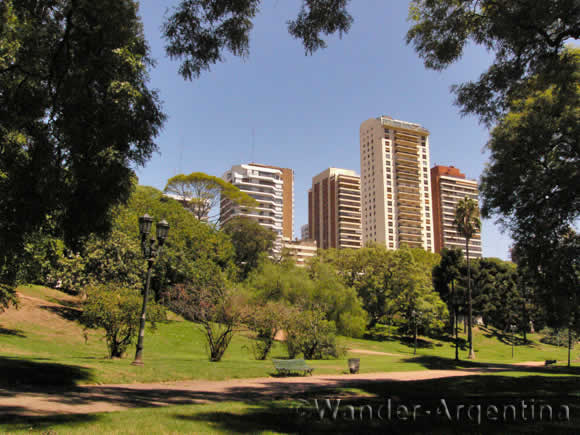
Tranquil Belgrano
Why Choose Belgrano
Belgrano’s cobbled sidewalks, shaded by enormous trees, are a pleasure to stroll.
There is a plethora of cafés, confiterías (pastry shops), and restaurants found along well-established streets such as Juramento and Luis Maria Campos.
Walking more than five Belgrano blocks is nearly impossible without running into a beautiful plaza or a stretch of green space alongside a busy road.
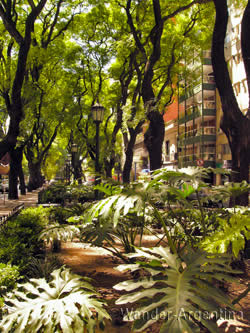
Fancy but not ostentatious stores and boutiques are tucked away on less-traveled streets, between apartments, schools and an abundance of supermarkets.
Among Belgrano’s main green spaces, Plaza Manuel Belgrano, located along Juramento near the neighborhood’s historic heart, serves as a lively meeting point surrounded by important landmarks like the Museo Sarmiento and the imposing Inmaculada Concepción Church (La Redonda).
On weekends, artisans set up stalls here, adding to its lively atmosphere.
For a more tranquil escape, Las Barrancas de Belgrano, designed by renowned landscape architect Carlos Thays, unfolds over a series of gentle terraces shaded by towering tipa and jacaranda trees.
This park is home to a picturesque gazebo, a large dog-friendly area, and open lawns where locals practice tai chi, sip mate, or simply unwind on a bench.
It’s also famous for its weekend tango performances, drawing dancers and spectators alike.
At the northern end of the neighborhood, Parque San Benito offers a more contemporary green space, set beside the Parroquia San Benito Abad.
This park sits near the popular Lagos de Palermo, making it a natural extension of the vast ecological corridor that extends toward Recoleta.
Orientation in Buenos Aires
Belgrano is located north of Palermo alongside the River Plate.
It encompasses the major streets of Juramento, Cramer, Libertador, Luis Maria Campos, and Cabildo, and is bordered by Avenida Congresso and Avenida de los Incas.
Three subte (subway) stops are located within Belgrano all along Avenida Cabildo: José Hernandez, Juramento, and Congresso De Túcuman.
Bus access is good throughout the neighborhood, with the Metrobús along Juan B. Justo being partiuclarly useful.
Biking is gerat in this neighborhood with a bike lane alongside the Metrobus (and bike might actually be faster).
There are also bike paths on Avenida del Libertador and Avenida Cabildo.
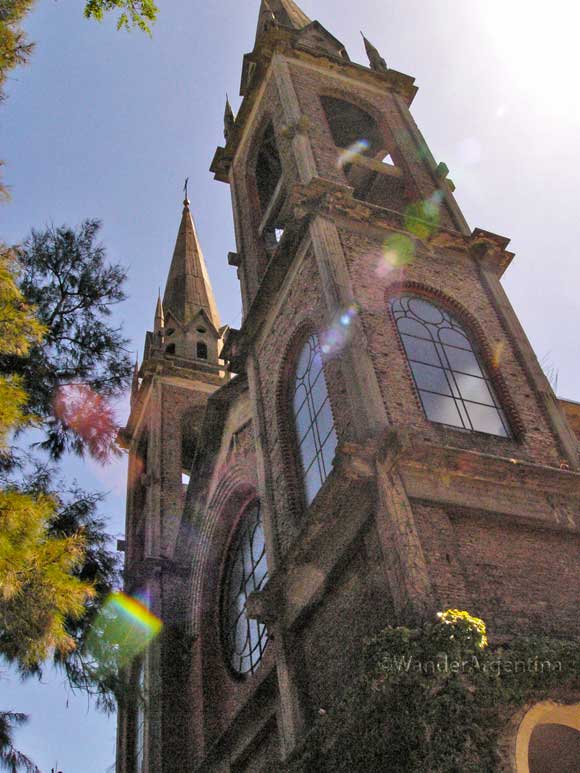
Since the 19th century, Belgrano, along with neighboring Coghlan, was home to upper-middle-class British immigrants (as well as some upwardly mobile Irish, who were often mistakenly labeled British in immigration documents).
The influence is seen in Victorian-era homes and schools such as the Belgrano Day School and the Buenos Aires English High School.
The Irish presence is revered by Irish pubs and the Fahy Club, known for its Irish step-dancing troupe, Celtic Argentina.
After World War I, the neighborhood became dominated by Germans, who established two German-language schools.
The lingering German presence in Belgrano is noted with the barrio’s own dying dialect known as ‘Belgrano-Deutsch,’ a WWII-era mix of German and Spanish.
Sections of Belgrano
Belgrano is a neighborhood with distinct personality shifts depending on which section you’re in.
Like Palermo, Belgrano is divided into four sub-sections:
• ‘Belgrano C’ is the commercial district.
• ‘Belgrano R‘ is a wealthy residential area with lovely ivy-strewn mansions.
• Bajo Belgrano or ‘Belgrano Chico’ contains Ciudad Universitaria, part of the University of Buenos Aires
• Chinatown is a distinct subsection of Baja Belgrano
Belgrano C
Boundaries: Belgrano C is bounded by Avenida del Libertador to the north, Avenida Cabildo to the west, Vuelta de Obligado to the east, and Juramento to the south.
Belgrano C is the neighborhood’s commercial heart, a fast-moving district where office workers, shoppers, and commuters converge.
This is part of Belgrano’s historic center radiating out from Plaza Manuel Belgrano.
This is where the neighborhood’s colonial past meets its modern present, with landmarks like the Inmaculada Concepción Church (La Redonda) standing beside contemporary cafés and artisanal markets.
Here, Avenida Cabildo pulses with constant energy, lined with high-street fashion stores, electronics shops, and an endless selection of cafés and confiterías.
Beneath it all, the Subte D line shuttles passengers to and from the city center, making this area a key transit hub.
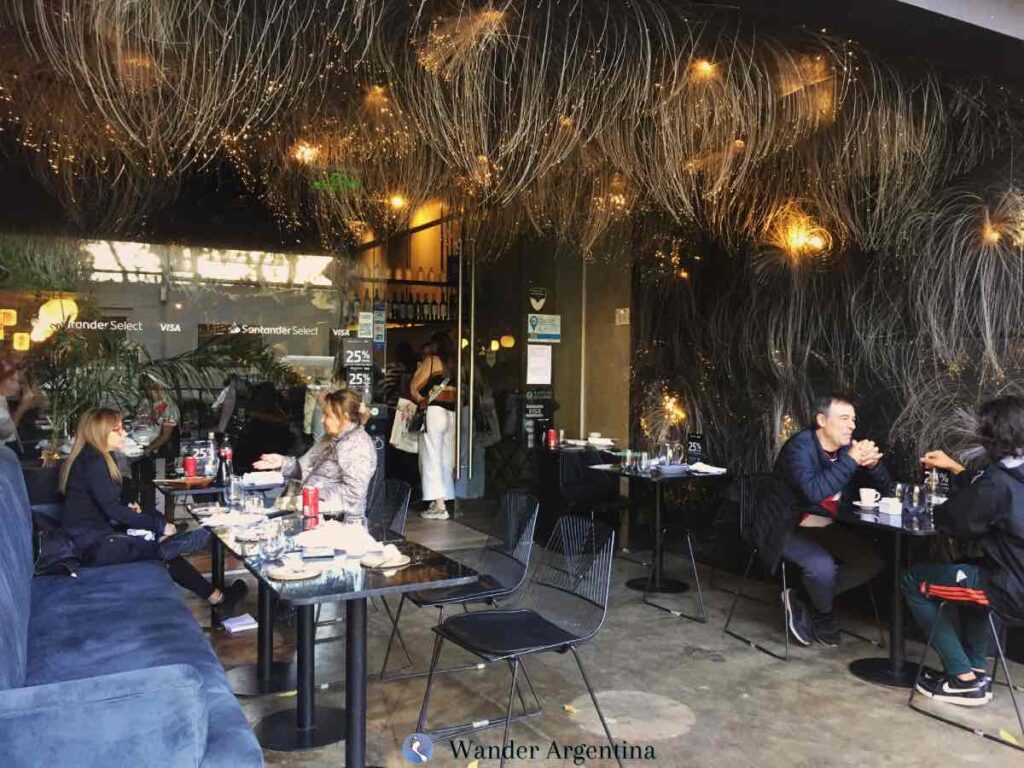
Plaza Noruega, a small but charming green space in Belgrano C, is a quiet reminder of the neighborhood’s Norwegian influence.
Located near the Norwegian Church (Iglesia Noruega en Buenos Aires) and the Norwegian Seamen’s Church, (Sjømannskirken), both of which have played an important role in maintaining Norwegian traditions and community life in Argentina.
While many Norwegians settled in the port area of La Boca, a significant number moved to Belgrano, which at the time was a growing residential area with strong European influences.
Argentina’s small but significant Norwegian-Argentine community continues to maintain cultural ties through language classes, folk events, and social clubs.
Even today, it hosts Norwegian holiday celebrations like Julebasar (Christmas Bazaar), where visitors can buy Scandinavian food and crafts.
Despite the urban bustle of Belgrano C, small plazas and tree-shaded sidewalks soften the edges, creating a balance between commerce and everyday neighborhood life.
Belgrano R
Boundries: Belgrano R is bordered by Avenida del Libertador to the north, Avenida Monroe to the west, Virrey del Pino to the east, and Avenida Cabildo to the south.
Belgrano R feels like a different world.
British-style mansions, lush gardens, and wide, cobbled-stoned streets make this one of Buenos Aires’ most exclusive residential areas.
This area developed around the Belgrano R train station, part of the former British railway network, which helped shape the district’s distinct architectural and cultural character.
A quiet, almost suburban atmosphere prevails with Victorian-style mansions and the old railway tracks adding to the area’s charm.
It’s the kind of place where you’ll see families out for a stroll, cyclists weaving through shaded avenues and the occasional classic car parked outside an elegant ivy-covered home.
Schools originally built for immigrant children such as Belgrano Day School and Buenos Aires English High School are located here.
While British influences shaped the neighborhood’s early development, the arrival of German immigrants after World War I created a distinct cultural divide.
German families settled in the area, founding institutions like the Goethe-Schule and the Pestalozzi-Schule, two prestigious German-language schools that remain today.
By the time World War II broke out, tensions between the British and German communities ran high, mirroring the global conflict.
These divisions extended beyond ideology—residential areas in Belgrano became informally segregated, with Germans and British expatriates clustering in separate pockets of the neighborhood.
A unique remnant of this era is ‘Belgrano-Deutsch,’ a rare linguistic hybrid of German and Spanish spoken within the German-Argentine community.
Though largely faded today, older residents and alumni of German schools still recall its quirks—Spanish verbs conjugated with German grammar, German words twisted into Spanish phonetics, and a distinctive mix of both languages in everyday conversation.
Despite its wartime tensions, overtime, Belgrano R evolved into one of Buenos Aires’ most elegant and peaceful neighborhoods.
Many of its grand, ivy-covered houses remain in the hands of families with European roots, preserving the area’s historic character.
Bajo Belgrano
Boundries: Bajo Belgrano is bounded by Avenida Cabildo to the north, Río de la Plata to the east, Avenida del Libertador to the south, and Avenida Libertador General San Martín to the west.
Bajo Belgrano—sometimes called Belgrano Chico— is the eastern end of Belgrano, with an eclectic mix of green spaces, academia, and cultural hubs.
It’s home to the sprawling Ciudad Universitaria, a massive University of Buenos Aires campus, where thousands of students crisscross the modernist buildings daily.
Beyond the university, Bajo Belgrano offers a green escape from the city’s density.
Nearby, the Costanera Norte hosts a mix of riverside parrillas (grill restaurants), bike trails, and recreational spaces, making it a favorite for weekend cyclists, joggers, and mate-drinking locals.
The Parque de la Memoria, a striking riverside memorial dedicated to victims of Argentina’s last dictatorship, is both a place of reflection and a scenic walkway with stunning views of the Río de la Plata.
This part of Belgrano has seen significant real estate development in recent years, with modern high-rise buildings replacing older low-rise houses.
The area’s eclectic mix includes sports clubs, such as the Excursionistas Football Club a local team founded in 1910 who have a passionate following despite playing in Argentina’s lower divisions.
While Bajo Belgrano might not have the same polished elegance as Belgrano R or the commercial buzz of Belgrano C, its mix of academic life, green spaces, and evolving urban landscapes makes it a fascinating and ever-changing part of Buenos Aires.
Chinatown
Boundries: Chinatown (which overlaps with Bajo Belgrano) is centered around Avenida De los Incas and Calle Arribeños, with its main area being along Avenida Jujuy and Calle Vuelta de Obligado.
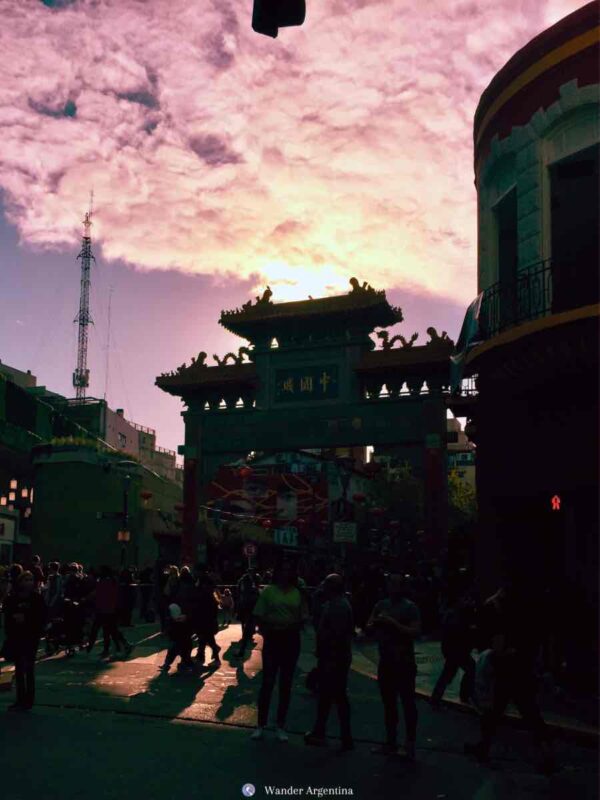
Just beyond, Barrio Chino or Chinatown has become one of the foreign visitors’ favorite cultural pockets, with traditional markets and restaurants serving everything from dim sum to steaming bowls of ramen.
➡ If craving spice or exotic flavors, read about grocery shopping in Chinatown’s specialty stores.
Those who happen to be in town for Chinese Spring Festival may want to head to Belgrano’s Chinatown for to celebrate Chinese New Year in Buenos Aires with dragon and lion dances and musical performances.
The 37-block area of ‘Barrio River’ in the neighborhood to the north, Nuñez is so-called because it contains the stadium for the River Plate soccer team, which is the country’s largest.
Belgrano Neighborhood Attractions
Along with the many supermarkets, and vegetable and fruit stands in Belgrano, health food stores are commonplace.
Belgrano’s most popular attraction for foreigners is its ultimate alternative food destination, Barrio Chino.
Bustling Avenida Cabildo is a one-stop shopping destination for athletic attire and mid-range to pricier clothing, particularly between Jose Hernandez and Juramento subway stations on the D line.
Independent artisans display their wares daily along the sidewalks around Juramento and Cabildo.
Several private universities are in Belgrano, along with multiple private language learning centers.
Belgrano’s cultural offerings include the Museo de Arte Español Enrique Larreta, a Spanish art museum located in the writer and art collector’s former home.
Museo Casa de Yrutia is found in the turn of the 19th century home of sculptor Rogelio Yrurtia and displays a number of his works.
The historic Sarmiento Museum in the former Belgrano town hall contains a collection of objects dating to the presidency of Domingo Sarmiento.
-Alana Fichman
Historic & Cultural Landmarks of Belgrano 🕋
- Plaza Manuel Belgrano – The heart of the neighborhood, home to weekend artisan fairs and surrounded by historic buildings.
- Inmaculada Concepción Church (‘La Redonda’) – A striking circular church that serves as a local landmark.
- Museo Sarmiento – A museum dedicated to Domingo Faustino Sarmiento, showcasing 19th-century Argentine history.
- Museo de Arte Español Enrique Larreta – A beautiful mansion-turned-museum featuring Spanish art and a stunning Andalusian garden.
Green Spaces & Parks of Belgrano 🏞
- Barrancas de Belgrano – A terraced green space designed by Carlos Thays, known for its historic gazebo and tai chi groups.
- Parque de la Memoria – A moving riverside memorial dedicated to victims of Argentina’s military dictatorship.
- Parque General Belgrano (Parque de Los Niños) – A waterfront park perfect for picnics and views of the Río de la Plata.
- Parque San Benito – A small, scenic park near the railway, ideal for jogging or relaxing.
Shopping & Markets 🛒
- Avenida Cabildo – The neighborhood’s main commercial strip, full of high-street stores, cafés, and boutiques.
- Barrio Chino (Chinatown) – A bustling enclave with authentic Asian supermarkets, souvenir shops, and incredible street food.
- Feria Artesanal de Belgrano – A weekend artisan market near Plaza Manuel Belgrano, selling crafts, mate gourds, and jewelry.

